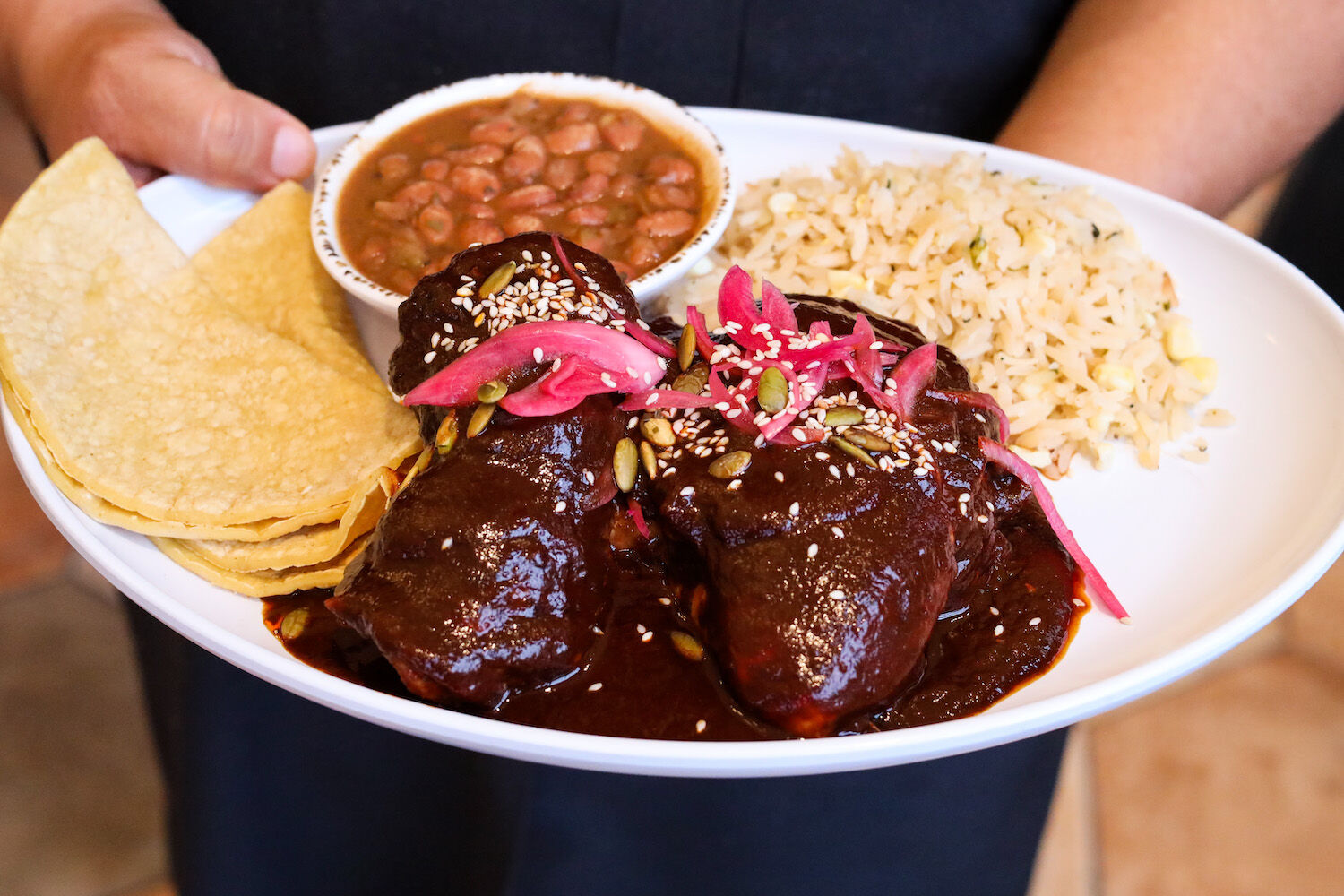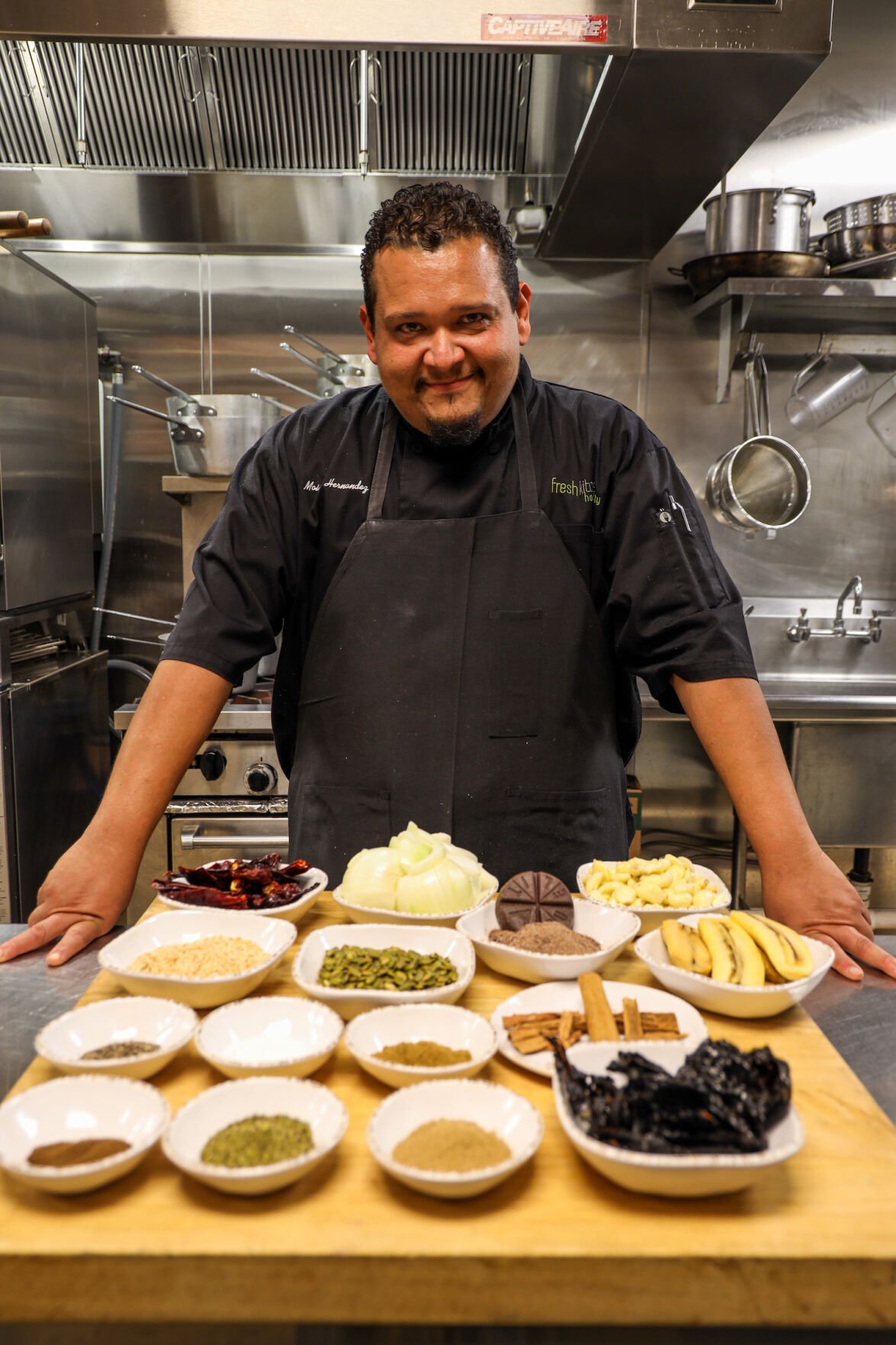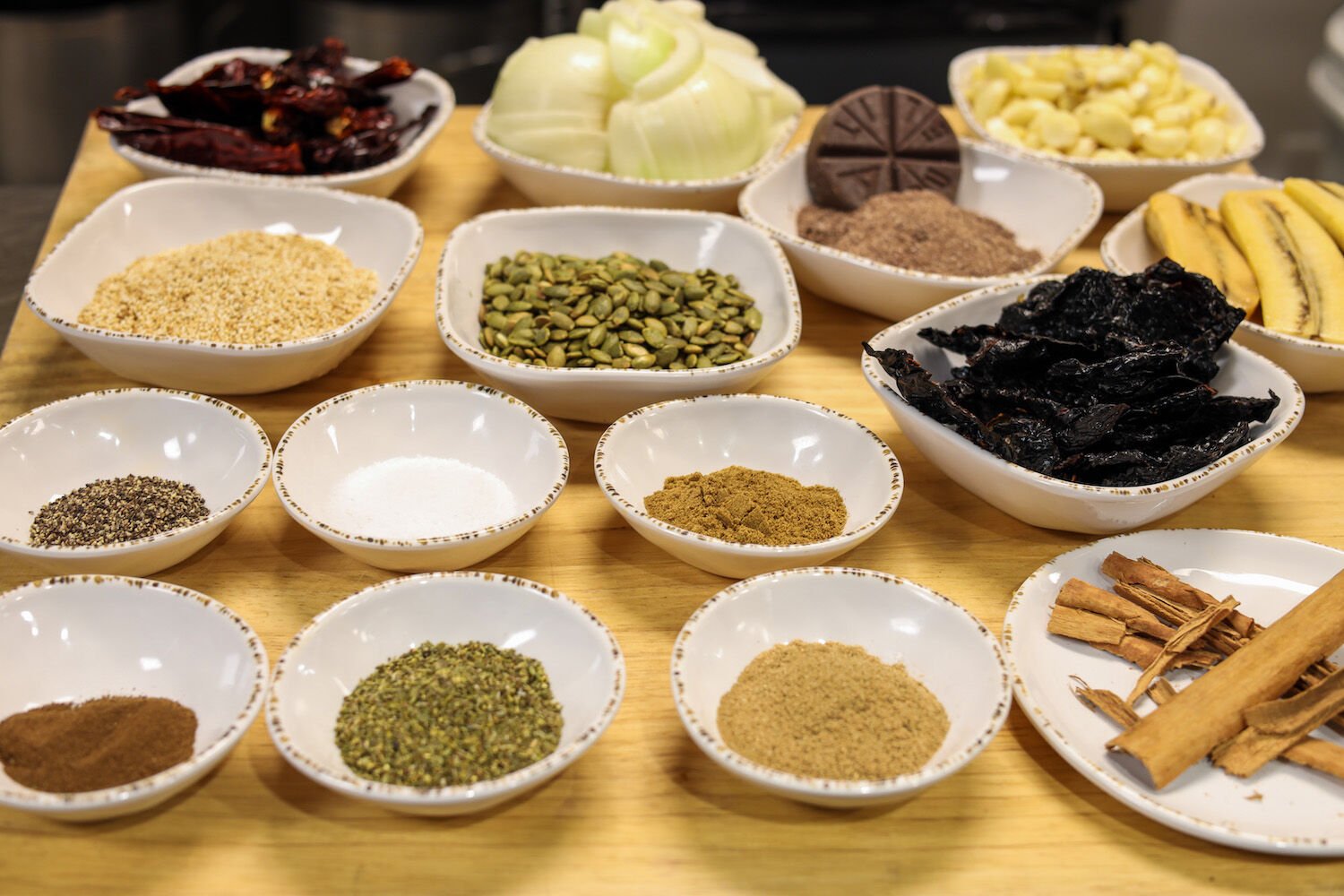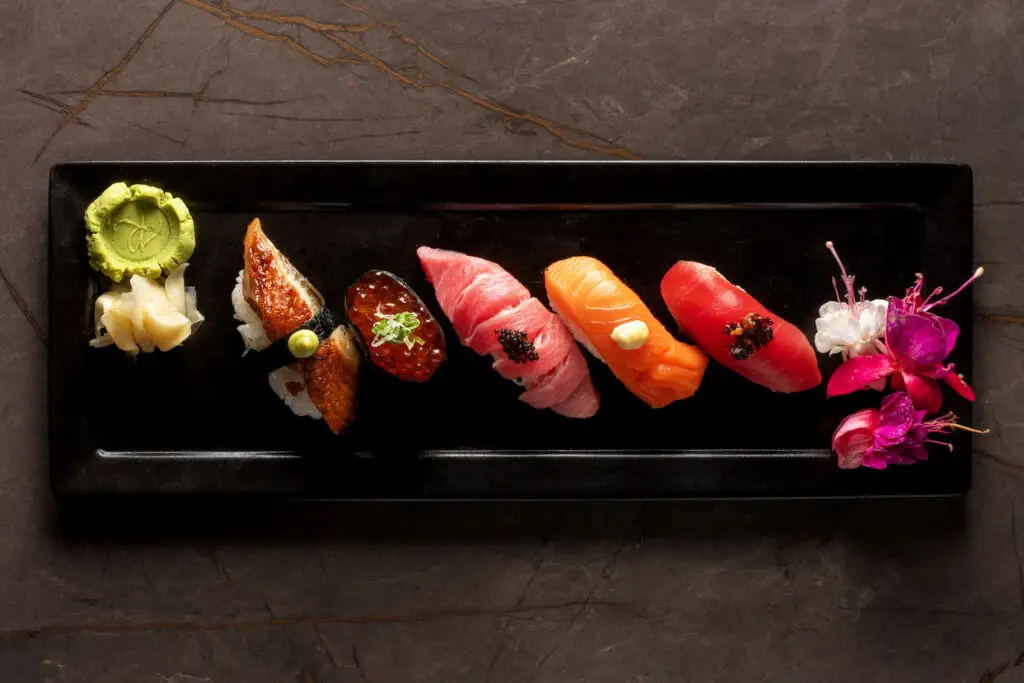
la cocina, platter
*Editor’s Note: La Cocina Mesa closed permanently on Sunday, November 20.
The first time Moises Hernandez tasted mole, he was 10-years-old at a little food stand called Grandma’s outside of a supermarket in Mexico. “It was really spicy,” he says with a laugh. So when present-day Hernandez developed the menu for La Cocina Mesa, a new Mexican restaurant in La Costa, he put a personal and milder twist on the traditional mole negro recipe.
Popular throughout Oaxaca, the state alone counts at least seven types of moles. In Mexico, “We have so many different moles [in Mexico], we have mole amarillo, negro, rojo,” says executive chef Hernandez.
Mole’s origin story varies depending on who you talk to. Some say it traces back to Indigenous women who hand-ground native ingredients for consumption, though aren’t certain that what they were making was mole specifically. Others suggest the ingredients came together in the Catholic Church, where nuns would make sweets and moles to sell using a blend of Indigenous chiles, chocolate, tomatoes, and Spanish imports like sesame seeds and cinnamon.

la cocina, chef
Credit: Deanna Sandoval
In its most basic form, typical mole sauce usually includes a mix of chiles, spices, fruits, nuts, and seeds. Inky, dark mole negro includes a bit of chocolate while mole amarillo (yellow) nixes it. Mole rojo features several red chiles like pasilla, guajillo, and ancho. There’s also the pepita (pumpkin seed) and tomatillo-driven green mole verde. When one considers unique family recipes, there are regional styles of the dish that reveal nuances.
With La Cocina Mesa, Hernandez gets to showcase his own version of mole, which he estimates takes at least 12 hours to prepare, and more ingredients than a college student typically keeps in their fridge.
Several hours are needed to first prepare and reduce the chicken stock, and to add dried guajillo and ancho chiles until they soften. Then onions, garlic, and plátano macho (plantains) sauté in a pan. In a separate pan, pepitas, sesame seeds, and whole cinnamon sticks toast in another. It smells divine.
Next comes the blending: Chicken stock, chiles, sauteed and pan-toasted goods, plus cumin, coriander, oregano, and other spices. All of that is then simmered along with Abuelita’s chocolate for five to six hours.
According to Hernandez, it’s common for some recipes to include tortillas or flour as a thickening agent, though he forgoes this step for La Cocina Mesa’s version. By the time it’s ready to plate over chicken with a side of rice, beans, and pickled red onion garnish the complex, aromatic mole sauce is equal parts earthy, mildly sweet and spicy.
Hernandez’s path to his own mole recipe started years ago—though he wasn’t always sure that cooking in restaurant kitchens would be his profession. He moved to San Diego from Mexico in 1994 and cashiered part-time at Jack in the Box during his high school days at Torrey Pines High in Del Mar.
Later, he nabbed a gig at The Bridges at Rancho Santa Fe’ snack bar making sandwiches and hot dogs for guests before working up to the pantry station. Within six months, he became a line cook. That’s when everything changed.

La Cocina, mole ingredients
Credit: Deanna Sandoval
“Every day was a new thing for me,” Hernandez recalls. There was always a new ingredient or cooking method or recipe to learn and different people to work alongside. And what Hernandez used to consider as just a job, was now something he could see as a career. A part-time role as a cook at Tinleaf Fresh Kitchen in La Costa would evolve into a full time role with its restaurant group, Fresh Kitchen Hospitality.
PARTNER CONTENT
“This is me, this is what I want to do,” Hernandez says of his love of cooking. It’s an act of love. A decade and change later, Hernandez now leads the kitchen teams of Grant and Jenny Gottesman’s restaurants, including: Newly minted La Cocina Mesa which is based on the staff’s family recipes from Mexico, Mediterranean-inspired Black Rail Kitchen + Bar, and breakfast spot Beach Plum Kitchen. All four restaurants are located in Plaza Paseo Real Shopping Plaza.

















